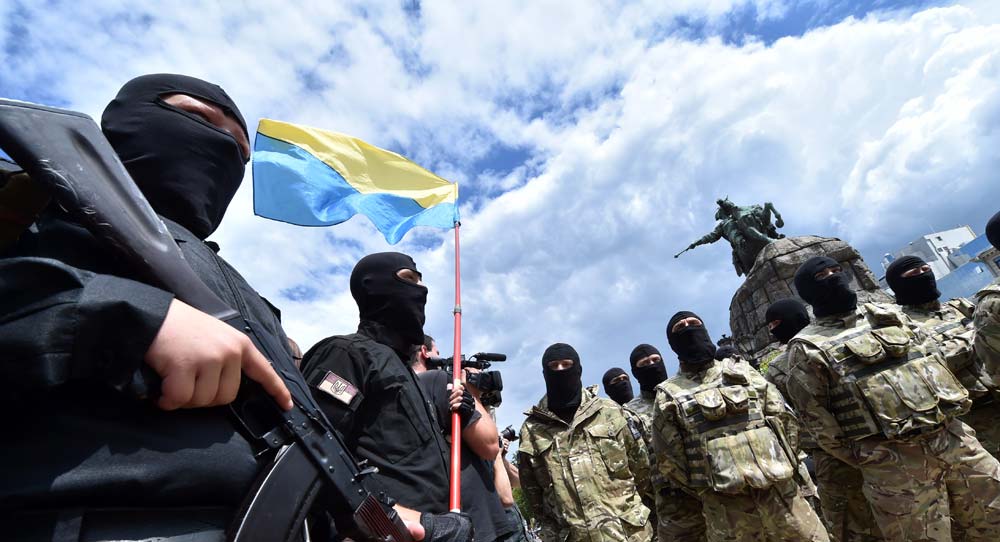The fourth anniversary of the Euromaidan protests in Ukraine is also a reminder of the political developments that were triggered by it: Russia’s annexation of Crimea in March 2014 and the outbreak of the war in the Donbas region shortly thereafter. As a result, Russia’s post-Cold War relationship with the West has reached an all-time low.
Despite its central role in European politics and East-West relations more generally, the war in Ukraine has by and large disappeared from public view. Over 10,000 people have died so far, about 1.8 million have been displaced internally or are affected by conflict in Ukraine, and an estimated 1 million have fled to Russia. Now, the war is also rapidly slipping off the political agenda in those countries tasked with brokering and ensuring peace and conflict resolution. Domestic political considerations are pushing aside whatever commitment there was left to progress with the implementation of the 2015 Minsk II agreement, and supplement it with new initiatives. This is a slippery and potentially dangerous slope.
Intermittently, small windows have opened, inserting new actors or ideas into the conflict resolution process. The appointment of U.S. Special Envoy to Ukraine Kurt Volker was one such moment; Russian President Putin’s proposal of a UN mission in September—however unrealistic in the initially proposed format—was another. Yet such windows tend to close quickly if they are not followed up on and connected to existing institutional building blocks.
Too much time was lost criticizing Putin’s proposal, both in the West and in Ukraine, instead of testing it as an opening gambit in a negotiation about a phased deployment of a UN mission with military, police, and civilian administrative elements. Now, Russian politics have begun to move into a phase dominated by upcoming presidential elections, allowing only—if at all—for peace initiatives that make Putin look like he is in charge of the process.
In Ukraine, the country’s 2019 presidential and parliamentary elections are also already casting their shadow over domestic politics. The political scope of President Petro Poroshenko, who remains the central figure in any attempt at conflict resolution, is severely limited when it comes to proactively engaging with the reintegration of the Donbas. His own popularity is too low, and opposition to anything that could be interpreted as “giving in” to Russia is too strong.
In the West, too little attention has been paid to two Ukrainian laws on the Donbas that led to protests inside and outside parliament in early October. The first one is the law on the special status of “certain areas” in the Donetsk and Luhansk regions, mandated by the Minsk agreement; first approved in 2014 for a period of three years, it has been prolonged until October 2018. It contains a reference to the need to hold local elections under Ukrainian law and international supervision in the stipulated areas before self-government provisions can take effect. To date, the law had not been implemented. Now, the reference to a “special status” for the occupied territories is even more emotionally charged in Ukrainian politics than it was three years ago.
The second significant law in this context is the simultaneously introduced draft legislation “on the restoration of Ukrainian sovereignty over the temporarily occupied territories.” If this draft law is approved, it would effectively undo the first law on the special status. Moreover, it uses terms like “occupation” and “Russian aggressor,” and can only have one effect: provide a legal basis for those who oppose conflict resolution initiatives, reinforce tensions with Russia, and make actual reintegration less likely.
By contrast, the law on the special status was born out of the timetable imposed by the Minsk agreement. As there are not many concrete instruments available, it should be revisited more actively by those leading the Normandy, Minsk, and U.S.-led attempts at conflict resolution. However, any exploration of the scope of this law as one piece in a new institutional process, intertwining the political and security elements of the Minsk agreement, will only have a leg to stand on if the reintegration law is not enforced.
Germany, as a key player in the Normandy format, remains inwardly oriented for the time being. Chancellor Angela Merkel’s position has not changed but a credible commitment to initiatives that could add a new momentum to the Minsk process is unlikely while a new government is being formed. Similarly, it is unclear to what extent the war in Ukraine is a priority on French President Emmanuel Macron’s agenda.
U.S. policy on Russia is dominated by domestic politics, giving rise to several lines being pursued at once. Moreover, the increasing divergence between the sanctions regimes in the United States and the EU, which is bound to follow the recent widening of U.S. sanctions that will depend on Congress rather than on the president, imposes further limits on a coherent U.S.-EU policy push on the war in Ukraine.
Overall, the political conditions for a resolution of the war in Donbas are deteriorating on all sides. Awareness of this should summon the political will, at least among European actors, to jointly commit to stepping up different local and international negotiation efforts, including the notion of phasing in UN peacekeepers linked to an internationally supervised administration of the occupied territories.






